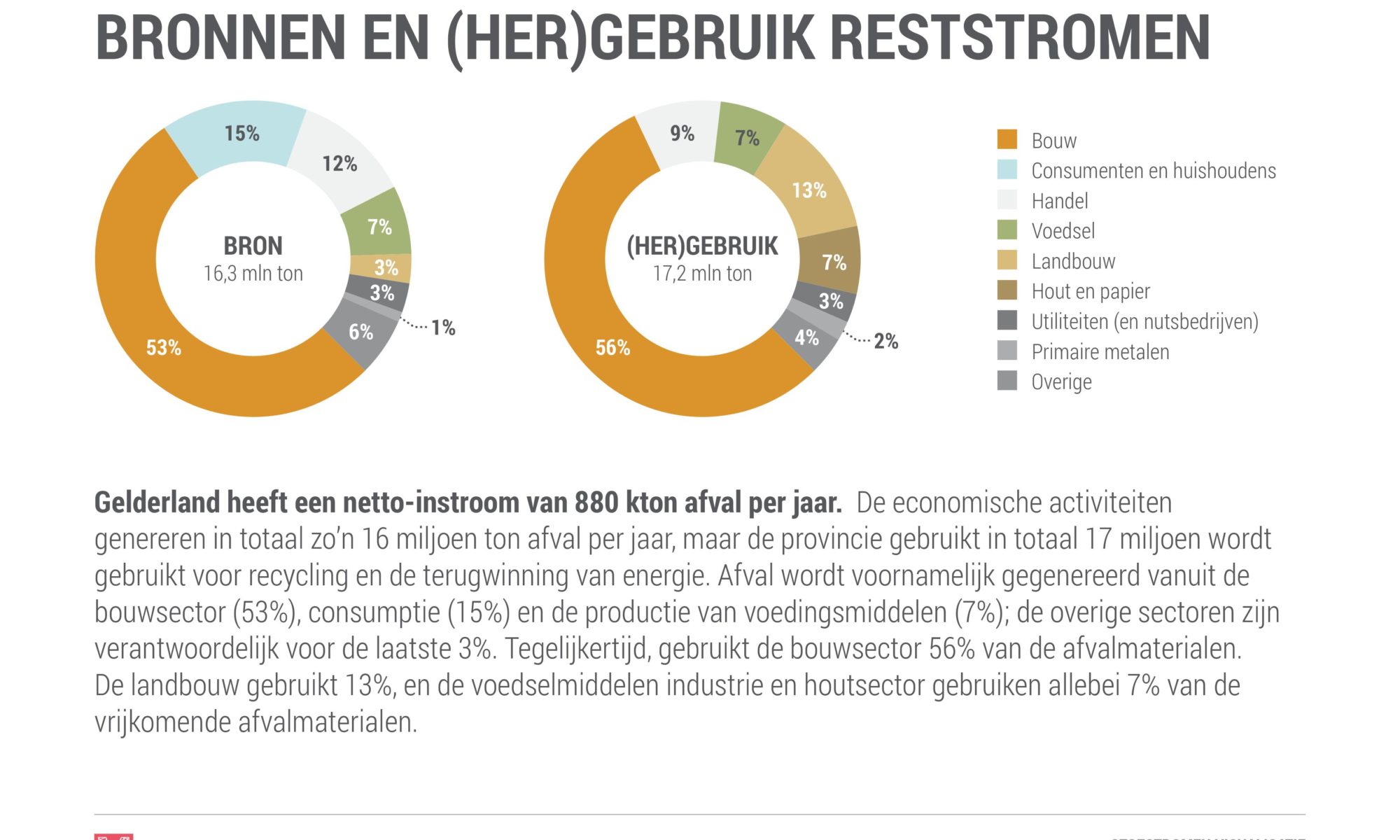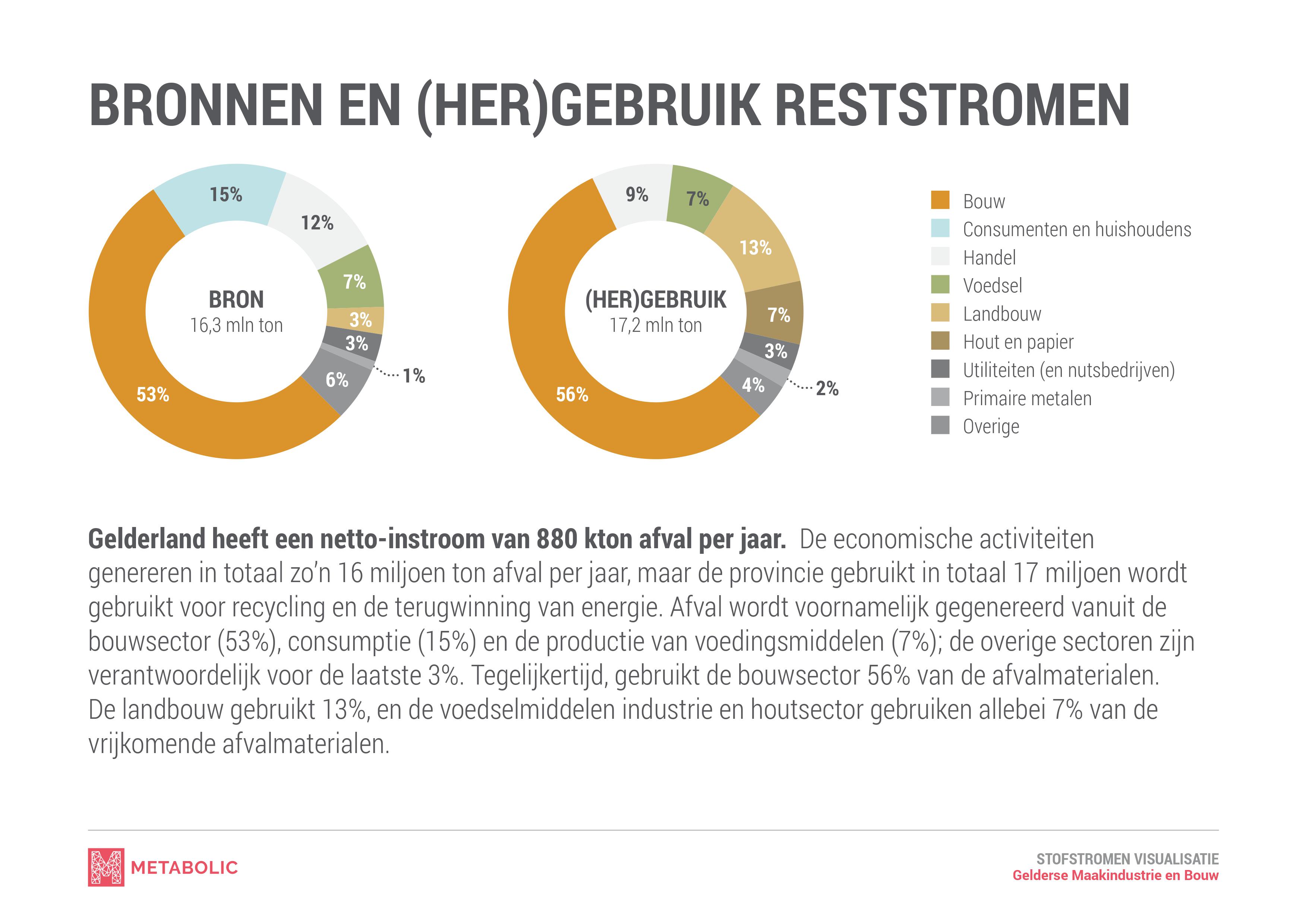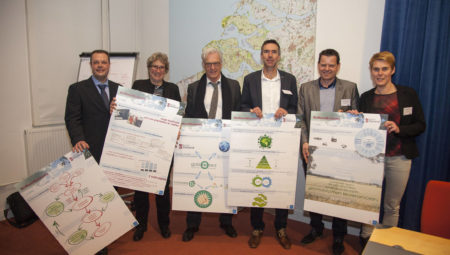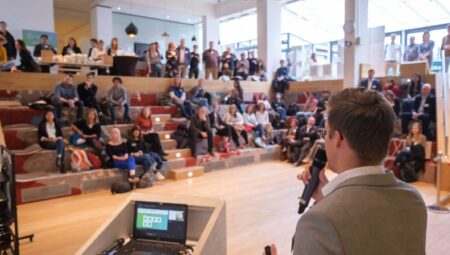Willem Huntink, Circular Economy programme manager for the province of Gelderland, was closely involved in drawing up the agenda. ‘The circular economy is unavoidable. Raw materials are becoming increasingly scarce. Throwing away or incinerating these raw materials will indeed become less attractive, from an economic and ecological viewpoint. That is why the province has set its sights on a zero waste future.’
Huntink believes that the key to this endeavour lies in the first instance on the input side. If the industry and the inhabitants use fewer raw materials, there will also be less waste. ‘Industry in Gelderland uses 44.7 million tonnes of raw materials and other materials on an annual basis. Fossil fuels (oil, gas) take up half of this, followed at a great distance by minerals (14 percent) and chemicals (9 percent). The industry uses a total of 1 million tonnes of waste as raw material. This volume can be bigger and it must grow, through the stimulation of reuse and the development of alternative raw materials, via regional chains among other things.’
Procurement policy
This transition will not happen automatically; Huntink acknowledges that. And that is why the province is acting as a booster. ‘To start with, we have to set a good example. We are doing that already in various areas, including circular procurement. Similar to biobased procurement, local governments will have to prepare their organisations for the growth in circular concepts. The parties involved in a procurement process – administrators, buyers and clients – must have a shared understanding. Relevant questions include: what are the province’s circular objectives and can they be translated into practical guidelines for buyers? What instruments are required so that buyers have hard procurement criteria at their disposal which they can use to account for their decisions? How can you weigh circular parameters such as material use (including LCA) against other criteria like price? In brief, together with public and private parties, we are working very hard to create the conditions for a circular procurement policy for the public sector.’
Auping
Apart from the demand side, the supply side will have to grow as well. Huntink argues that the business community is not yet working with circular business models on a large scale. ‘Apparently they do not feel any necessity yet and they earn their money doing what they have been doing for years. We have to start by raising awareness. The province shoulders its responsibilities in this respect by organising meetings for the SME where fellow entrepreneurs can talk about their circular successes. Several businesses have since taken steps, like Auping which leases mattresses, or the producer Van de Bosch from Almelo which produces lighter, stronger and more sustainable concrete by mixing in natural fibres.’
Biobased raw materials – materials and energy – form an integral part of the circular agenda in Gelderland. Thus various businesses (clusters) are actively using natural fibres for textile, biocomposites (packaging) or applications in paper/cardboard. ‘The other routes are manure valorisation, especially aiming at nutrients, and the transition to vegetable proteins. These are the three focus areas for which we see the best market opportunities and biggest impact on the environment.’




